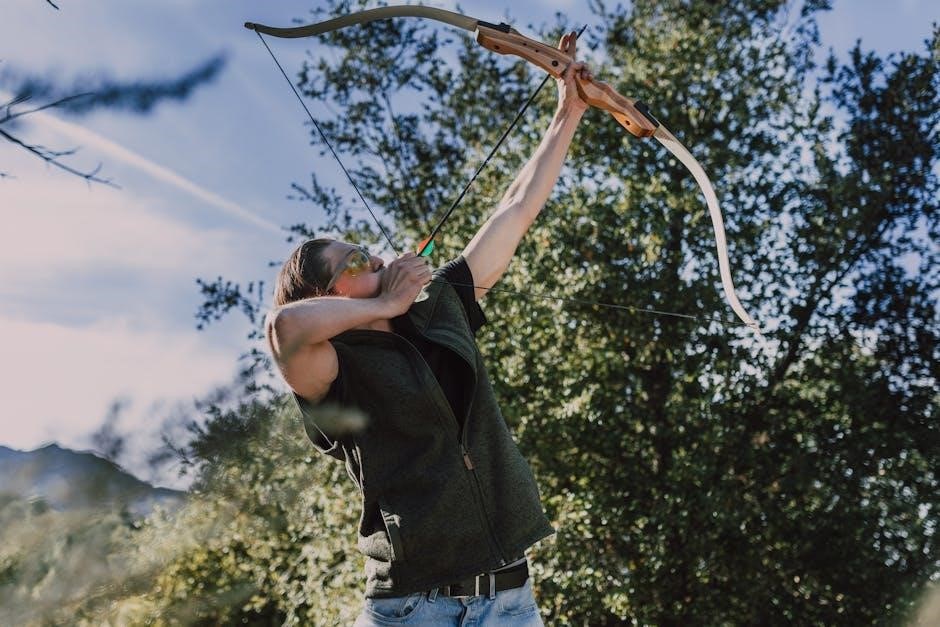Semi-guided elk hunts offer a balance between expert guidance and personal autonomy, allowing hunters to leverage professional insights while still executing the hunt independently․

What Are Semi-Guided Elk Hunts?
Semi-guided elk hunts combine expert guidance with hunter autonomy, offering a balanced experience for those seeking both support and independence․ Unlike fully guided hunts, where guides handle most tasks, semi-guided hunts provide essential support, such as scouting, planning, and strategic advice, while allowing hunters to execute shots and make field decisions․ Guides may also assist with elk calling, navigation, and understanding terrain, but hunters are expected to manage their own gear and decisions․ This format is ideal for hunters with some experience who desire cost-effective, flexible, and educational opportunities․ It bridges the gap between DIY hunts and fully guided experiences, offering a mix of professional insight and personal responsibility․ Hunters can learn valuable skills while enjoying a structured yet independent adventure․
Why Semi-Guided Hunts Are Growing in Popularity
Semi-guided elk hunts are gaining popularity due to their cost-effectiveness, flexibility, and educational value․ Hunters appreciate the balance between expert guidance and personal autonomy, allowing them to learn essential skills while still managing the hunt independently․ The ability to access professional insights, such as elk behavior and terrain knowledge, without the high costs of a fully guided hunt, makes this option appealing to many․ Additionally, semi-guided hunts cater to hunters seeking independence but still needing logistical support, creating a bridge between DIY and fully guided experiences․ This model attracts both experienced hunters looking to refine their skills and newcomers aiming to gain confidence in the field, making it a versatile and increasingly sought-after option for elk hunting enthusiasts․
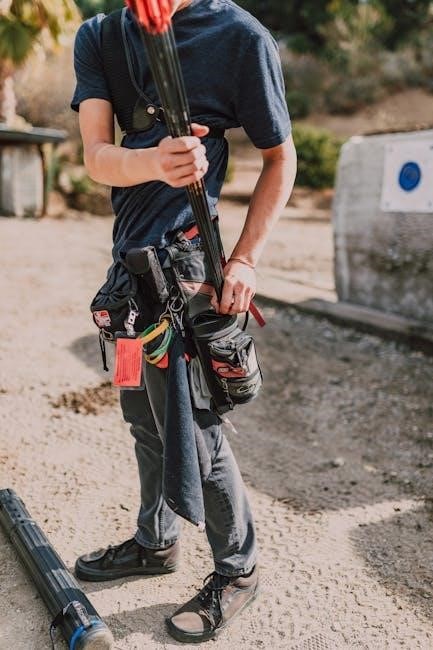
Understanding the Structure of Semi-Guided Elk Hunts
Semi-guided elk hunts blend professional guidance with hunter autonomy, offering tailored support while allowing individuals to execute the hunt independently, focusing on knowledge sharing and skill development․
Role of the Guide in Semi-Guided Hunts
In semi-guided elk hunts, guides play a crucial role by providing expert knowledge and support while allowing hunters to execute the hunt independently․ Guides typically scout locations, share strategies, and offer insights into elk behavior, helping hunters make informed decisions․ They may assist with setting up equipment, elk calling techniques, and navigating terrain․ Guides also often handle logistics such as field dressing and processing the elk, ensuring a smooth experience․ Their expertise is invaluable for hunters seeking to improve their skills and success rates․ However, unlike fully guided hunts, the guide’s involvement is limited, giving hunters more autonomy and opportunity to refine their abilities․ This balance makes semi-guided hunts appealing for those who want both guidance and independence․
Skills and Knowledge Required for Hunters
Hunters engaging in semi-guided elk hunts need to possess a combination of physical and mental skills․ Strong knowledge of elk behavior, including their habitat, feeding patterns, and response to calls, is essential․ Hunters should be proficient in navigation, map-reading, and orienteering to move effectively through diverse terrain․ Physical endurance is critical, as elk hunting often involves long hikes and challenging conditions․ Familiarity with firearms and archery equipment is a must, along with accurate shooting skills․ Basic understanding of field dressing and game processing is also beneficial․ Hunters should be prepared to adapt strategies based on weather and elk activity․ While guides provide support, hunters must be self-reliant and resourceful to maximize success in the field․
Locations and Terrain for Semi-Guided Elk Hunts
Semi-guided elk hunts typically occur in prime elk habitats across the western United States․ Key locations include the Rocky Mountains, Colorado, Montana, Wyoming, and New Mexico․ These regions offer vast public and private lands with ideal elk ecosystems․ The terrain varies from dense forests to open meadows and steep mountainous areas, providing diverse hunting challenges․ Public lands, such as National Forests, are popular due to their accessibility, while private ranches often guarantee higher elk concentrations․ Hunters should be prepared for rugged terrain, varying elevations, and unpredictable weather conditions․ Understanding the local landscape and elk movement patterns is crucial for success in these dynamic environments․

Planning and Preparing for a Successful Hunt
Thorough planning is essential for a successful semi-guided elk hunt․ Research locations, understand regulations, and prepare physically and mentally․ Gather essential gear and develop strategies to maximize success․
Researching the Best Locations for Elk Hunting
Researching prime elk hunting locations is critical for success․ Focus on western states like Colorado, Montana, and Wyoming, known for abundant elk populations․ Public lands offer accessibility, while private ranches may provide exclusive opportunities․ Consider season timing, as elk habitats shift with weather and hunting pressure․ Look for areas with ample food sources, water, and cover․ Elevation plays a role, as elk migrate between summer and winter ranges․ Utilize online resources, state wildlife agency reports, and local knowledge to identify hotspots․ Consult with experienced hunters or guides to gain insights into less crowded areas and migration patterns․ This research ensures you target areas with high elk activity, increasing your chances of a successful hunt․
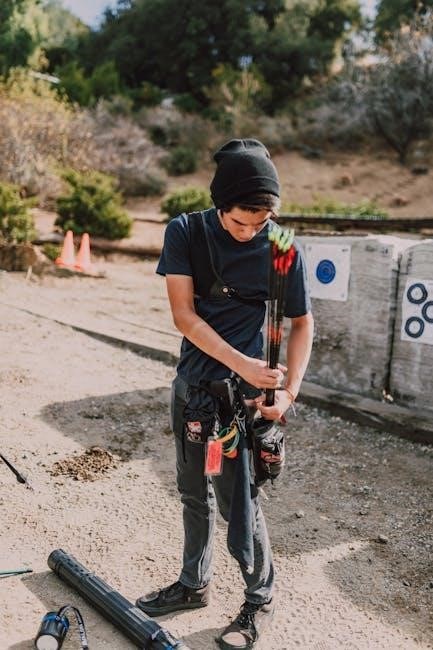
Obtaining Necessary Permits and Licenses
Securing the right permits and licenses is essential for a legal and smooth semi-guided elk hunt․ Requirements vary by state, so research the specific regulations where you plan to hunt․ Most states offer limited tags through lotteries or preference point systems․ Apply early to increase your chances of drawing a permit․ Ensure you have a valid hunting license and any additional elk tags required․ Some states also mandate completion of a hunter safety course․ Guides or outfitters often assist with understanding local regulations․ Double-check all paperwork before the hunt to avoid legal issues․ Remember, permits are non-transferable, and hunting without one can result in severe penalties․ Stay informed and compliant to enjoy a hassle-free experience․
Physical Conditioning and Mental Preparation
Physical conditioning and mental preparation are crucial for a successful semi-guided elk hunt․ Elk hunting often involves hiking long distances in rugged terrain, requiring strong endurance and stamina․ Start training months in advance with cardiovascular exercises like running or cycling, and incorporate strength training to build muscle․ Mental preparation is equally important, as patience and focus are key to staying calm during challenging moments․ Practice visualization techniques to stay motivated and prepared for the physical and emotional demands of the hunt․ A well-prepared body and mind will enhance your ability to navigate difficult terrain, withstand unpredictable weather, and make quick decisions when opportunities arise․ Proper conditioning ensures you can fully engage in and enjoy the hunt․
Selecting the Right Gear and Equipment
Selecting the right gear and equipment is essential for a successful semi-guided elk hunt․ Start with a reliable rifle or bow, ensuring it is suited for elk-sized game․ Opt for a caliber with sufficient power, such as a ․300 Winchester Magnum, and pair it with quality optics like a scope or binoculars․ Camouflage clothing and scent-control gear are critical to avoid detection․ Choose durable, waterproof boots and layers for varying weather conditions․ A sturdy backpack with essentials like water, snacks, and a first-aid kit is a must․ Don’t forget navigation tools like a GPS or compass, and consider elk calling devices to attract game․ Archery hunters should ensure their bows are properly tuned․ Always check gear condition and practice with it before the hunt to ensure reliability in the field․
Understanding Elk Behavior and Hunting Strategies
Understanding elk behavior is key to successful semi-guided hunts․ Elk are highly intelligent and adaptable, often moving between feeding, bedding, and watering areas․ They are most active during early morning and late evening, seeking cover in dense forests or rugged terrain during the day․ Bulls are vocal during the rut, using calls to attract cows, while cows and calves rely on caution and group protection․ Effective strategies include calling, stalking, and ambushing․ Hunters should mimic elk vocalizations, such as cow calls or bugles, to lure bulls․ Scouting for fresh tracks, rubs, and droppings helps locate active herds․ Timing hunts during the rut or when elk are focused on food sources increases success․ Patience and knowledge of elk patterns are essential for outsmarting these elusive animals․
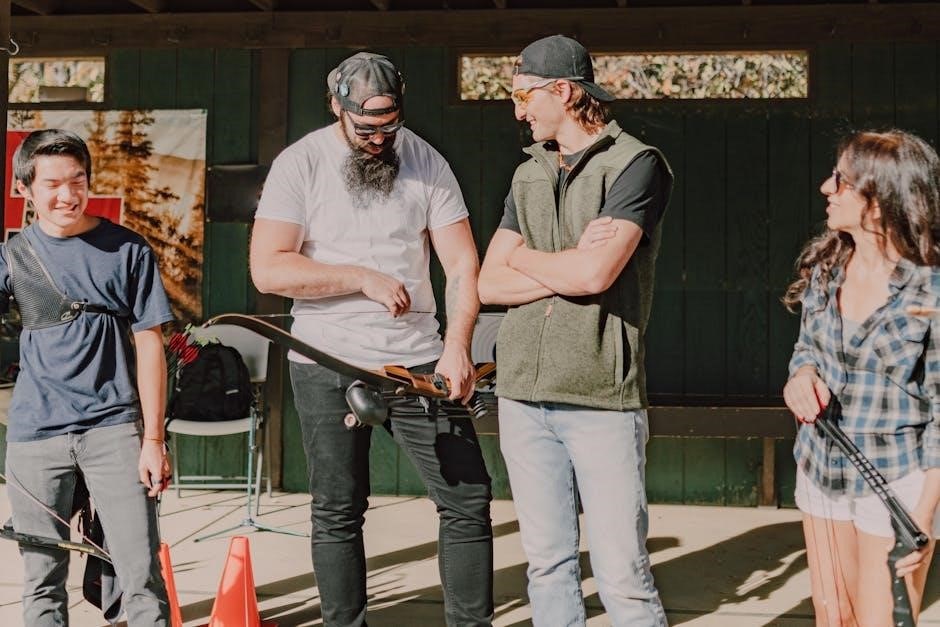
Choosing the Right Guide or Outfitter

Choosing the right guide or outfitter is crucial for a successful semi-guided elk hunt, as they provide knowledge, access, and support tailored to your needs․
How to Find a Reliable Guide or Outfitter
Finding a reliable guide or outfitter for semi-guided elk hunts requires thorough research and due diligence․ Start by seeking recommendations from experienced hunters or outdoor forums․ Check online reviews and ratings to assess their reputation and success rates․ Verify their certifications and ensure they are licensed to operate in the region you plan to hunt․ Contact local wildlife agencies or hunting organizations for trusted referrals․ Additionally, ask for references from past clients to gain insights into their professionalism and effectiveness․ A reputable guide or outfitter will have extensive knowledge of the terrain, elk behavior, and local regulations, ensuring a safe and productive hunting experience․
Questions to Ask Before Booking a Hunt
Before booking a semi-guided elk hunt, it’s crucial to ask the right questions to ensure a successful and enjoyable experience; Inquire about the guide’s success rates, experience, and familiarity with the hunting area․ Clarify what services and equipment are included in the cost․ Ask about the size of hunting groups and the guide-to-hunter ratio․ Understand the physical demands of the hunt and any mental preparation required․ Discuss the guide’s approach to elk calling, stalking, and shot placement․ Find out about emergency procedures and first aid availability․ Finally, ask about field dressing, packing, and transportation logistics․ These questions will help you assess the outfitter’s expertise and ensure alignment with your expectations and hunting style․
Red Flags to Avoid When Selecting a Guide
When selecting a guide for a semi-guided elk hunt, there are several red flags to watch out for․ Be cautious if the guide lacks proper licensing or seems evasive about their experience․ Avoid outfitters who refuse to provide references or hesitate to share success rates․ Be wary of guides who are unclear about the services included or the terrain you’ll be hunting․ Steer clear of outfitters who prioritize high hunter numbers over quality experiences․ Additionally, be skeptical of guides who promise guaranteed kills or use unethical hunting practices․ Lastly, avoid guides who lack a clear plan for emergencies or seem unprepared for the challenges of the hunt․ These red flags can indicate unreliability or poor professionalism, which could ruin your hunting experience․

Logistics and Execution of the Hunt
Semi-guided elk hunts require careful coordination between hunters and guides․ Camp setup, transportation, and hunting strategies are planned meticulously, ensuring a balance of guidance and independence․
Accessing Private vs․ Public Land for Hunting
Accessing private vs․ public land for semi-guided elk hunts involves understanding land-use regulations and permissions․ Public lands, managed by agencies like the U․S․ Forest Service, are open to hunters but often require permits․ Private lands may offer exclusive access but typically demand permission or leasing agreements․ Hunters must research land ownership and obtain necessary permits or leases to avoid trespassing․ Public lands are more accessible but can be crowded, while private lands may offer better elk concentrations and solitude․ Guides often help navigate these complexities, ensuring hunters comply with rules and maximize their hunting experience․ Understanding these differences is crucial for a successful and legal hunt․
Elk Calling Techniques and Strategies
Elk calling is a cornerstone of semi-guided elk hunts, requiring skill and strategy to mimic natural elk vocalizations․ Common calls include bugles, cow calls, and calf calls, each used to lure bulls or locate herds․ Guides often teach hunters how to use diaphragm or external calls effectively․ Timing is critical, as elk are most responsive during the rutting season․ Hunters should start with soft, subtle calls to avoid spooking elk and transition to louder, more aggressive calls to challenge bull elk․ Patience is key, as calling may take time to yield results․ Understanding elk behavior and adjusting calls based on the situation maximizes success․ Proper calling strategies can make the difference between a fruitful hunt and a missed opportunity․
Field Dressing and Processing the Elk
Field dressing and processing the elk are critical steps in semi-guided hunts, ensuring the meat remains fresh and high-quality․ Guides often assist with the initial field dressing, teaching hunters how to safely and humanely remove organs and drain blood․ Proper technique prevents contamination and preserves the integrity of the meat․ Once field dressed, the elk is typically cooled to prevent spoilage before being transported to a processing facility․ Hunters should learn basic knife skills and understand the importance of maintaining a clean environment during this process․ Guides may also provide tips on how to skin and butcher the elk effectively, ensuring the hunter leaves with a successful harvest․ Proper handling ensures the meat stays fresh and ready for consumption or storage․
Packing Out the Harvest

Packing out the harvest is a crucial step in semi-guided elk hunts, requiring careful planning and physical effort․ Guides often assist in breaking down the elk into manageable quarters, which are then placed into durable game bags to protect the meat․ Hunters must organize the load efficiently, balancing weight distribution to navigate challenging terrain․ Proper equipment, such as sturdy backpacks and frames, is essential for carrying the heavy loads․ Hunters should stay hydrated, pace themselves, and use proper lifting techniques to avoid fatigue or injury․ Guides may also recommend using horses or ATVs for easier transport in accessible areas․ Packing out the harvest ensures the hunter leaves with a successful and rewarding outcome, respecting the animal and the land․
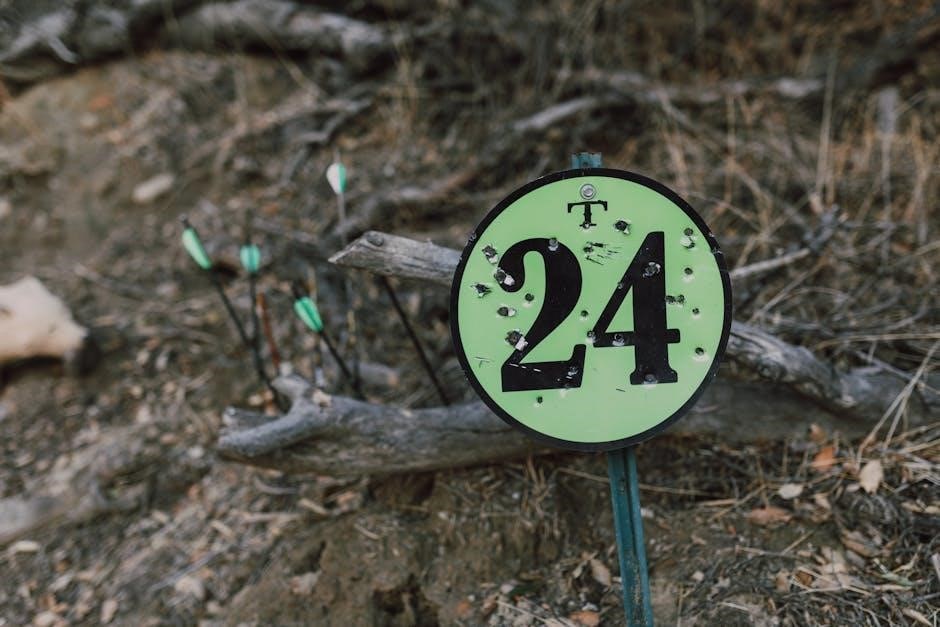
Post-Hunt Processes and Considerations
Post-hunt processes involve handling the harvest, ensuring legal compliance, and reflecting on the experience․ Proper meat storage, taxidermy, and gear maintenance are key considerations for a successful outcome․
Handling and Preserving the Meat
Proper handling and preserving of elk meat are crucial to ensure quality and safety․ After field dressing, cool the carcass promptly to prevent spoilage․ Store the meat in clean, airtight containers, keeping it dry to avoid contamination․ Aging the meat for 7-14 days enhances tenderness and flavor․ For long-term preservation, consider freezing, canning, or smoking․ Freezing at 0°F (-18°C) maintains freshness for up to a year․ Always follow food safety guidelines to prevent bacterial growth․ Properly label and date stored meat for easy organization․ Sharing the harvest with family and friends is a common practice, ensuring the elk is fully utilized and appreciated․ This step completes the hunting cycle, honoring the animal and the effort invested․
Taxidermy and Memorializing the Hunt
Taxidermy is a popular way to preserve memories of a successful elk hunt․ A professional taxidermist can mount the elk’s hide and antlers, creating a lifelike trophy that commemorates the hunt․ The process involves preparing the hide, creating a form to shape the animal’s features, and adding finer details like eyes and fur texture․ This art form allows hunters to display their harvest proudly․ Additionally, many hunters choose to memorialize their experience through photos, journals, or sharing stories․ These methods capture the essence of the hunt and serve as lasting reminders of the effort and skill involved․ Memorializing the hunt ensures the memory lives on, celebrating the connection between the hunter and the wild․
Sharing the Experience and Tips for Future Hunts
Sharing the thrill of a semi-guided elk hunt with others can inspire and educate fellow hunters․ Many hunters document their journey through photos, videos, or blogs, offering insights into their strategies and challenges․ Sharing tips on gear selection, terrain navigation, and elk behavior can help others prepare for their own adventures․ Additionally, hunters often provide advice on working with guides, emphasizing communication and preparation․ By sharing experiences, hunters foster a sense of community and continuous learning․ For future hunts, tips like staying physically conditioned, practicing elk calling, and researching new locations can make a significant difference․ Passing on knowledge ensures that the legacy of elk hunting continues to grow and improve․
Semi-guided elk hunts offer a perfect blend of guidance and independence, making them ideal for hunters seeking both support and personal growth in the wilderness․
Final Thoughts on Semi-Guided Elk Hunts
Semi-guided elk hunts provide an exceptional balance between guidance and independence, offering hunters the chance to grow their skills while still benefiting from expert knowledge․ These hunts cater to a wide range of experience levels, from novice hunters needing direction to seasoned hunters seeking a more self-reliant adventure․ The structured yet flexible approach allows participants to learn valuable techniques, such as elk calling and tracking, while building confidence in the field․ Success in these hunts not only brings the reward of harvesting an elk but also fosters a deeper connection with nature and a sense of personal accomplishment․ By choosing the right guide and preparing thoroughly, hunters can maximize their experience and create lasting memories․ Semi-guided elk hunts are a timeless way to immerse oneself in the thrill of the hunt while gaining new skills and perspectives․
